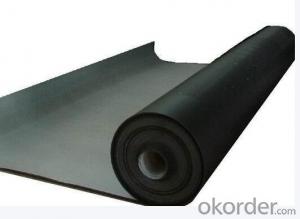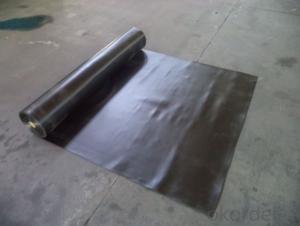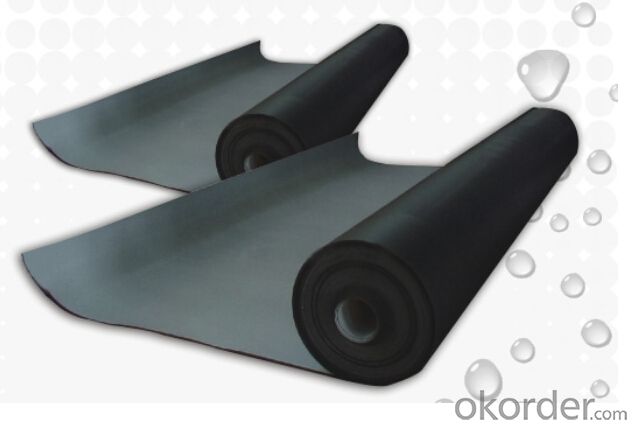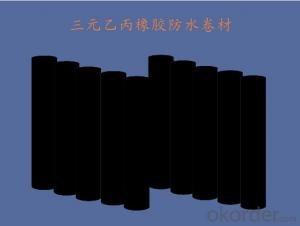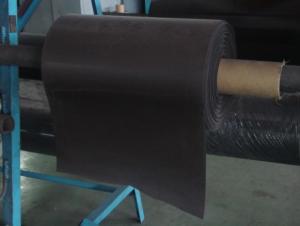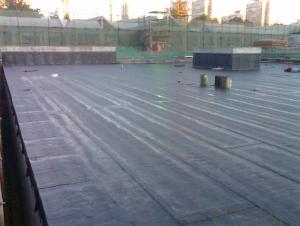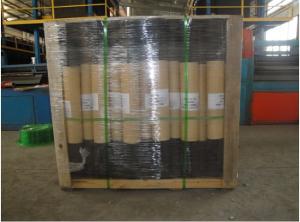EPDM Waterproofing Roof Membrane Best Price
- Loading Port:
- China Main Port
- Payment Terms:
- TT OR LC
- Min Order Qty:
- -
- Supply Capability:
- -
OKorder Service Pledge
OKorder Financial Service
You Might Also Like
EPDM waterproofing roofing membrane
Width: 1.2m
Length: 20m
Thickness: 1.2mm 1.5mm 2.0mm
1. Introduction:
2. Features:
Excellentphysical and mechanical performance
Hightearing resistance
Gooddeformation adaptability
High puncture resistance
Highaging resistance
UVresistance
3. Application:
Roofs, Basement, Toilets
Industrial and civil building waterproofing
Geosynthetic liner for swimming pool, channels, irrigation system
Especially suitable for projects with high requirements in durability, anti-corrosion and deformation
4. Specification:
Type | EPDM Waterproof Membrane | |||
Material | EPDM Rubber | |||
Thickness | 1.0mm | 1.2mm | 1.5mm | 2.0mm |
Size | 1.2m(width) * 20m(length)/roll | |||
Type | Vulcanized | |||
Pattern | Non-reinforced(homogeneous) | |||
Packing | 24sqm--80sqm/roll, with plastic bag | |||
Color | Black | |||
Application | Roofs, basement, pond, Lake, steel structure roof, swimming pool, underground, tunnel, etc | |||
5. Some photos:
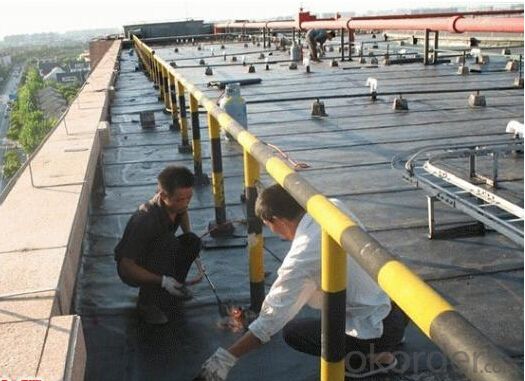
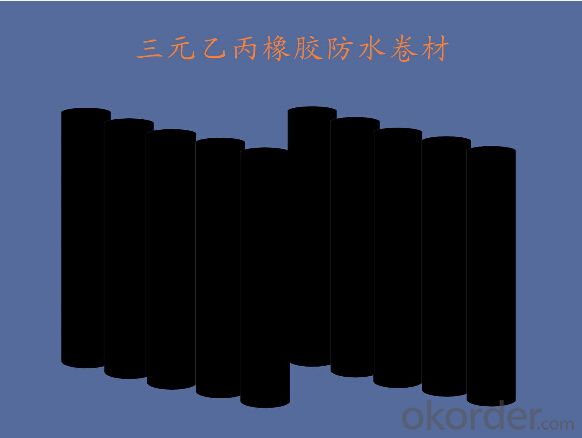
- Q: What are the common mistakes to avoid when installing a waterproofing membrane?
- Some common mistakes to avoid when installing a waterproofing membrane include inadequate surface preparation, improper selection of the membrane material, improper seam sealing, insufficient coverage or overlap of the membrane, and failure to test for leaks before covering the membrane.
- Q: Can a waterproofing membrane be used for parking garage ramps and driveways?
- Yes, a waterproofing membrane can be used for parking garage ramps and driveways. These areas are often exposed to water, moisture, and other environmental elements that can cause damage to the structure over time. By applying a waterproofing membrane, it creates a barrier that prevents water penetration and protects the underlying concrete or asphalt from deterioration. This helps to extend the lifespan of the ramps and driveways, reduce maintenance costs, and enhance overall durability. Additionally, the use of a waterproofing membrane can also prevent water from seeping into the underground parking areas, preventing potential water damage and maintaining a safe and dry environment for vehicles and pedestrians.
- Q: Can a waterproofing membrane be used for wastewater treatment plants or sewage facilities?
- Yes, a waterproofing membrane can be used for wastewater treatment plants or sewage facilities. It helps to prevent water leakage, ensuring the containment and proper treatment of wastewater or sewage.
- Q: Can waterproofing membranes be used on both horizontal and vertical surfaces?
- Yes, waterproofing membranes can be used on both horizontal and vertical surfaces.
- Q: Can a waterproofing membrane be used for a foundation wall?
- Yes, a waterproofing membrane can be used for a foundation wall. Waterproofing membranes are commonly used to prevent water infiltration and moisture issues in below-grade structures such as basements and foundation walls. These membranes act as a barrier to protect the foundation from water damage, helping to keep the interior of the building dry and preventing structural problems caused by moisture.
- Q: Does a waterproofing membrane require any protective coatings or sealants?
- In order to enhance its performance and durability, a waterproofing membrane typically needs some form of protective coatings or sealants. While the membrane itself provides waterproofing to some extent, it may not be enough to withstand all environmental conditions or potential damage. To create an extra barrier against water intrusion, UV radiation, mechanical stress, and chemical exposure, it is advisable to apply protective coatings or sealants on top of the membrane. These coatings or sealants also offer additional flexibility, strength, and protection against wear and tear. To determine the suitable type of coating or sealant for the specific membrane and project requirements, it is essential to seek advice from a professional waterproofing specialist.
- Q: What should the attention of the membrane waterproof construction?
- (1) grass-roots coating on the base layer of treatment agent, requiring thin and uniform, generally dry, when the sticky hand can be paving the membrane;
- Q: How does a waterproofing membrane handle moisture from the ground?
- A waterproofing membrane is designed to effectively handle moisture from the ground by creating a barrier that prevents water infiltration. It is typically made from materials such as rubber, bitumen, or modified asphalt, which are impermeable to water. When installed correctly, the membrane forms a continuous, watertight layer that prevents water from seeping through the foundation or walls. The membrane is typically installed on the exterior side of a building's foundation, where it acts as a protective barrier against groundwater. It is applied directly onto the concrete or masonry surface, creating a seamless and durable waterproofing layer. The membrane is then covered with a protective layer, such as soil or backfill, to ensure its long-term integrity. In addition to its impermeable properties, a waterproofing membrane also incorporates features that allow it to handle moisture effectively. For instance, it may have built-in channels or dimples that allow water to drain away from the foundation, preventing the accumulation of hydrostatic pressure. Some membranes also have self-healing properties, meaning they can seal small punctures or cracks that may occur over time. Overall, a properly installed waterproofing membrane acts as a reliable barrier against moisture from the ground. It helps protect the structure from water damage, prevents the growth of mold and mildew, and maintains a dry and healthy indoor environment. However, it is essential to ensure that the membrane is installed correctly by following the manufacturer's guidelines and working with experienced professionals to ensure its effectiveness.
- Q: Can a waterproofing membrane be used on precast copper surfaces?
- Yes, a waterproofing membrane can be used on precast copper surfaces. The membrane will create a barrier that prevents water penetration, ensuring the durability and longevity of the copper surface.
- Q: Are waterproofing membranes resistant to termites?
- No, waterproofing membranes are not specifically designed to be resistant to termites.
Send your message to us
EPDM Waterproofing Roof Membrane Best Price
- Loading Port:
- China Main Port
- Payment Terms:
- TT OR LC
- Min Order Qty:
- -
- Supply Capability:
- -
OKorder Service Pledge
OKorder Financial Service
Similar products
Hot products
Hot Searches
Related keywords

